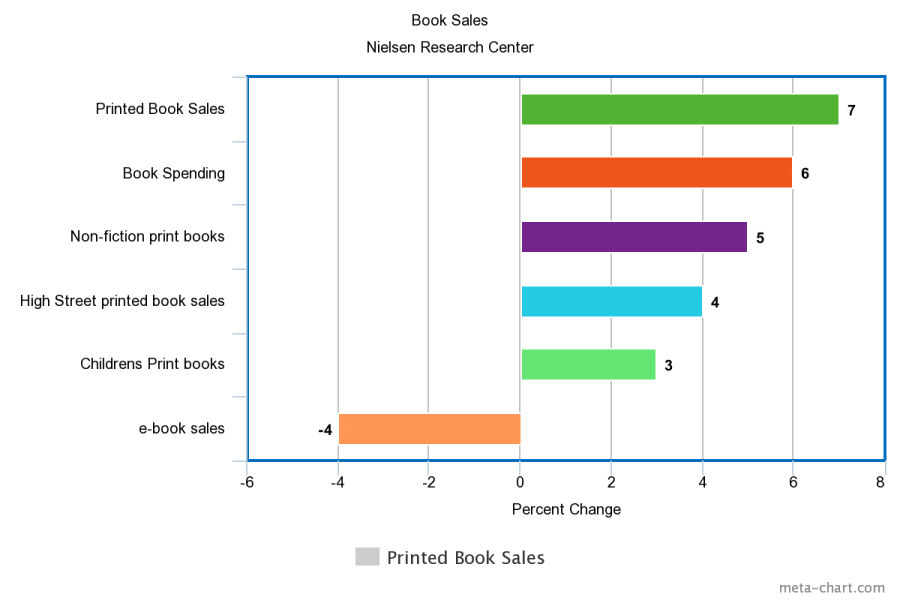E-readers and e-books on electronic devices were once the rage across several countries. Despite the rise in sales of digital devices like tablets, the number of e-readers and e-books being sold are declining rapidly while sales for print books are rising.
According to a report by All Charts, Codex Group, the percentage of readers between the ages of 18-24 have had a 37 percent increase in buyers who want to spend less time on digital devices. This statistic is contrastive to the statistic that readers over 65 who prefer to read their books on digital devices.

This change in the market comes with confusion for manufacturers of these devices. Despite the success of both digital music, and video games, sales in the digital versions of books are still falling, but why?
According to Association of American Publishers, sales of e-books for trade publishers fell 14 percent in 2015. Codex president, Peter Hildick-Smith noted that a new consumer phenomenon, a so-called “digital fatigue,” is beginning to rear its head in the market.

In the same study, the Codex survey found that despite increased screen time on devices such as tablets, with capabilities to read digital books, younger readers are leaving e-books and returning to print. Hildick-Smith expects that if the market is not recharged with lower-priced, or higher-quality options for digital books, sales will continue to erode.
Of course, this issue doesn’t just effect the manufacturers of e-readers and publishers of e-books, it affects the writers.
In recent years, alongside the previous increase in digital sales, writers turned to publishers like Amazon to easily create and market digital e-books with self-publishing tools. With the decline in digital sales, however, it may become harder for self-published writers to sell their product.
Despite the decline in sales, a study by Pew Research Center found readers who are sticking with digital e-books are reading them from their phones more. This means the writer will have an extra step between writing and formatting their manuscript to accommodate for smaller screens.
In light of the stagnation, smartphones are providing a new market entirely for publishers as readers flock to smartphones for their books. The stagnation means nothing according to Pew Research Center who predicts the stagnation to end, and in fact increase exponentially by 2018, however, the sales in physical books are also rising.
Nielsen Book Research UK found that printed book sales rose 7 percent. Nielsen lends this shift in the market to adult coloring books, and the new Harry Potter book which came out year, which Nielsen said does not translate well to digital formats.

The numbers for both print and digital are good indicators of the future for writers of all genres. For writers of young adult fiction novels, it is looking like a time to write for print as younger generations vie for the physical editions of books.
The future is bright yet still uncertain for the world of books, and publishing. Only time can tell if things will truly look up for digital sales of novels.

